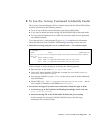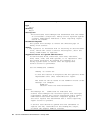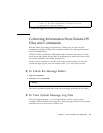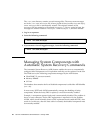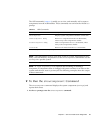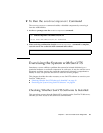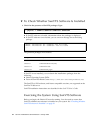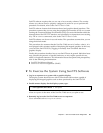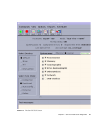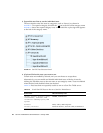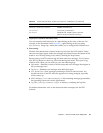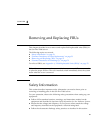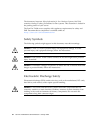
Chapter 2 Sun Fire T1000 Server Diagnostics 45
SunVTS software requires that you use one of two security schemes. The security
scheme you choose must be properly configured in order for you to perform this
procedure. For details, refer to the SunVTS User’s Guide .
SunVTS software features both character-based and graphics-based interfaces. This
procedure assumes that you are using the graphical user interface (GUI) on a system
running the Common Desktop Environment (CDE). For more information about the
character-based SunVTS TTY interface, and specifically for instructions on accessing
it by TIP or telnet commands, refer to the SunVTS User’s Guide.
SunVTS software can be run in several modes. This procedure assumes that you are
using the default mode.
This procedure also assumes that the Sun Fire T1000 server is headless—that is, it is
not equipped with a monitor capable of displaying bit mapped graphics. In this case,
you access the SunVTS GUI by logging in remotely from a machine that has a
graphics display.
Finally, this procedure describes how to run SunVTS tests in general. Individual tests
may presume the presence of specific hardware, or may require specific drivers,
cables, or loopback connectors. For information about test options and prerequisites,
refer to the following documentation:
■ SunVTS Test Reference Manual
■ SunVTS 6.0 PS3 Doc Supplement (SPARC)
▼ To Exercise the System Using SunVTS Software
1. Log in as superuser to a system with a graphics display.
The display system should be one with a frame buffer and monitor capable of
displaying bit-mapped graphics such as those produced by the SunVTS GUI.
2. Enable remote display. On the display system, type:
where test-system is the name of the Sun Fire T1000 server you plan to test.
3. Remotely log in to the Sun Fire T1000 server as superuser.
Use a command such as rlogin or telnet.
# /usr/openwin/bin/xhost + test-system



